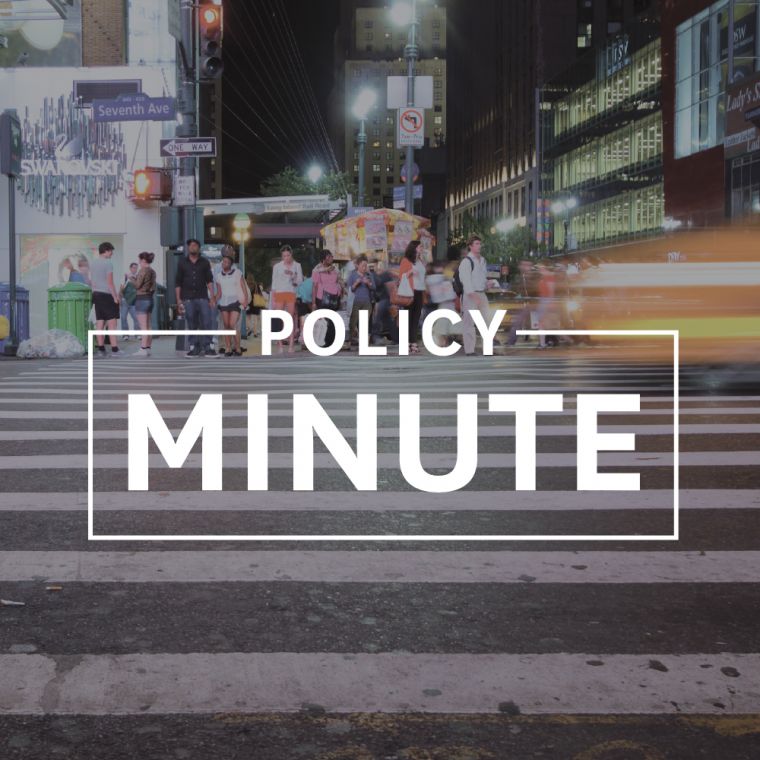
Policy Minute: New York State Property Tax System

In January, the New York State Assembly Committee on Real Property Taxation held a public hearing to evaluate New York City’s real property taxation system. Over the years, there have been numerous calls for reform from public officials, advocates, and academics alike, to address inequities within the current four property class system.
Status Quo
- Property taxes are New York City’s largest source of revenue. In FY 2015, the city collected nearly $21 billion from property owners, representing 27% of all city revenues, according to the latest IBO budget summary. More >>
-
While one- to three-unit residential properties (Class 1) have twice the estimated market-value of 4+ residential properties (Class 2), they pay a smaller share of the overall tax levy. More >>
NYU Furman Center Research
- The undervaluation of co-ops and condos has significant consequences for the distribution of tax burdens in New York City. A policy brief by NYU Furman Center, Shifting the Burden: Examining the Undertaxation of Some of the Most Valuable Properties in New York City, outlines how some of New York City’s most valuable properties in its highest-cost neighborhoods are significantly and persistently undervalued and discusses the consequences. The report identifies 50 individual co-ops in 46 buildings that were sold in 2012 for more than the New York City Department of Finance’s estimate of the market value of the entire building. More >>
- New York City’s property tax system favors homeowners. A report by the NYU Furman Center, Distribution of the Burden of New York City’s Property Tax, which appeared in the State of New York City’s Housing and Neighborhoods in 2011 report, finds that all property is not created equally when it comes to New York City’s property tax. The city’s tax system “provides for radically different tax treatment of equally valuable properties, depending on the use of the property and the form in which it is owned. This inequality is especially pronounced in the preferential treatment shown to homeowners at the expense of residential landlords and their tenants.” More >>
Other Research
- A historical perspective on New York City’s property tax. On the 25th anniversary of the legislation that created New York City’s modern property tax structure, the Independent Budget Office of the City of New York published an in-depth report that cataloged the system’s history and how it has shifted tax burdens over time. See: Twenty-five Years After S7000A: How Property Tax Burdens Have Shifted in New York City
- Exploring the limits of property taxes. Citing evidence from New York City, NYU Furman Center Research Affiliate Andrew Hayashi finds that assessment caps in New York City “are regressive and tend to benefit new homebuyers and sellers rather than current homeowners on fixed incomes.” See: Property Taxes and Their Limits: Evidence from New York City
- Three options to increase New York City’s property tax revenues. In the wake of Mayor de Blasio’s election, the Citizens Budget Commission published a report offering three options for increasing the city’s property tax revenues. One option “maintains status quo inequities; in contrast, the other two address some major problems with fairness and efficiency that characterize current policy." See: Options for Property Tax Reform: Equitable Revenue Raising Reforms for New York City’s Property Tax

Quote Worthy
“The system is so outdated that the city currently values the most expensive apartment — a $100 million condo at 157 W. 57th Street as being worth $8.1 million, according to the IBO.”
-Khristina Narizhnaya, Jennifer Gould Keil, and Danika Fears in NY Post, January 22, 2016
Property Taxes Beyond NYC
Map: Property taxes: How does your county compare? (CNN Money) More >>
Scorecard: The Best and Worst Property Tax Administration (Council on State Taxation, May 2011) More >>
More Viewpoints
Read: New York City Property Values Surge (Josh Barbanel, Wall Street Journal, January 15, 2016)
Read: Why Effort to Reform NYC Property Taxes Has Stalled (Ruth Ford, City Limits, June 10, 2015)
The NYU Furman Center’s Policy Minute highlights research and discussion relevant to current policy debates. To receive Policy Minute by email, join our mailing list.


